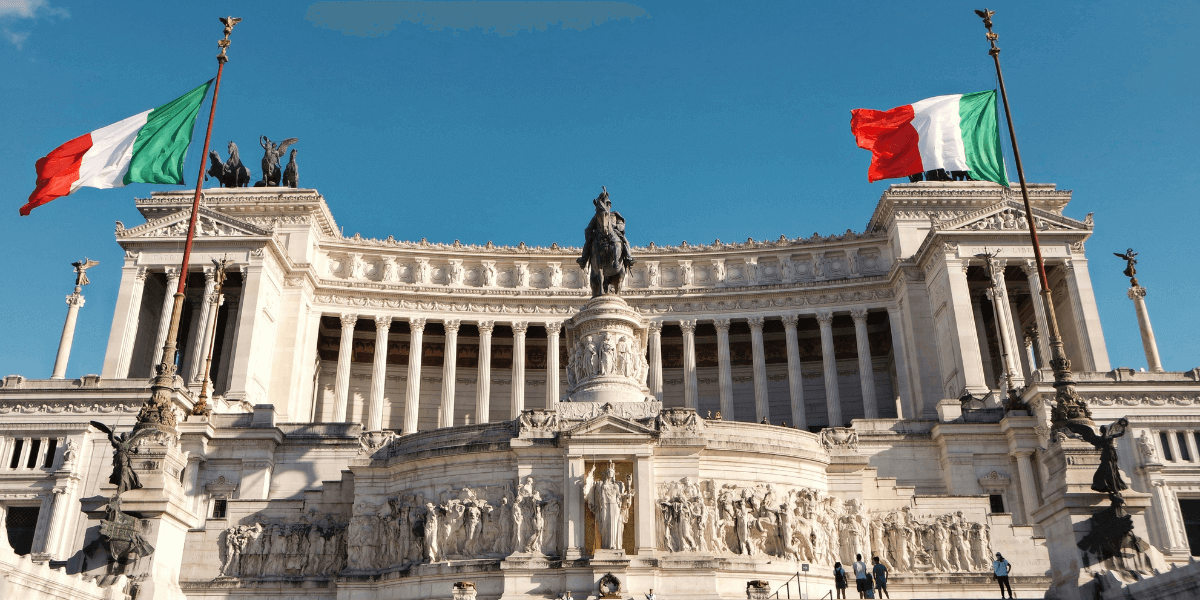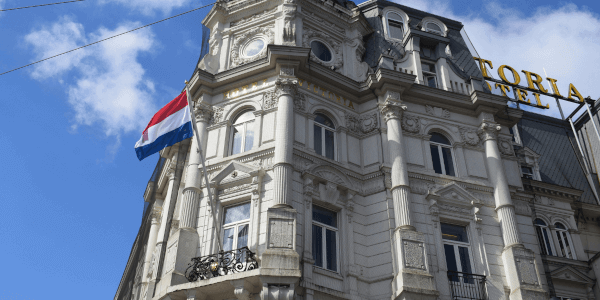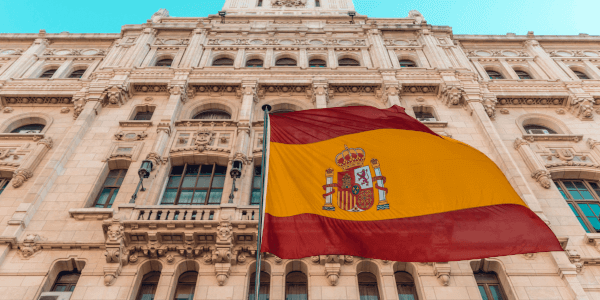How much to charge for freelance web design
Find out how much to charge for freelance web design in 2025. Learn to price projects based on scope and value to confidently attract higher-quality clients.

Thinking about a life of self-employment while enjoying the dolce vita in Italy? Applying for your lavoro autonomo (self-employed) visa is the first step to making the dream come true.
In this guide, we’ve discussed everything you need to know about the Italian self-employed visa, from application requirements to processing times, costs, and tax obligations. We’ve also explained how Wise Business can help you manage your finances with ease once you’re in Italy, giving you the best means to power your venture to new heights.
| Topic | Notes |
|---|---|
| Visa Exemption 🗺️ | Are you a UK citizen? If so, you must apply for a Lavoro Autonomo (self-employed) visa to work and stay in Italy for longer than 90 days as a freelancer. Once you arrive in Italy on this visa, you must also apply for a residence permit within 8 days. Are you an EU citizen living in the UK? If so, you do not need to apply for a visa to come to Italy1. However, once you arrive in Italy, you must apply for a residence permit within 8 days. |
| Lavoro Autonomo Visa 📝 | The lavoro autonomo visa is for UK citizens who want to be self-employed full-time in Italy. It is not for digital nomads whose base of work is outside Italy, and who are looking to travel to Italy for a temporary period of time to work remotely2. Read more in our guide to the Italy Digital Nomad Visa. |
| Quotas (Decreto Flussi) 📊 | Applications for the lavoro autonomo visa are part of Italy's annual quota system, the Decreto Flussi. While the decree for 2025 authorises up to 165,000 visas for mostly seasonal and employed workers, it also sets a much smaller, separate quota for self-employed individuals, which is typically only around 500 places per year3. |
| Long-term Residency 🗓️ | The initial residence permit, which formalises your stay in Italy, is granted for up to 2 years. After legally residing in Italy for 5 continuous years, you become eligible to apply for a long-term residence permit. |
| Application Time ⏳ | The entry visa application stage, which takes place in the UK after you have the Nulla Osta, can take up to 120 days to be processed by the Italian Consulate. |
⚠️ Are you specifically interested in the digital nomad visa? If so, we've covered it in great detail in our guide to the Italy Digital Nomad Visa.
You should only apply for a lavoro autonomo (self-employed) visa for Italy if you are not an EU citizen and plan to work as a freelancer, start a business, or hold an executive position in a company in Italy.
If you are an EU citizen, you do not need a visa to travel to Italy, but you do need to register as a taxpayer, open a VAT number and apply for social security to legally work there once you’ve arrived.
Unlike in other countries, you cannot apply for a visa for self-employment in Italy all year round. You must check if the decreto flussi (quota) is sufficient and the window is open to apply.
The dates for applying in 2026 have yet to be announced, and are expected to be early in the year3. However, the most reliable source of information will always be the Italian government website.
The Nulla Osta is a document from the Italian government which allows a non-EU citizen to apply for a work visa5. You must apply for your visa within 6 months of the date of issue of the Nulla Osta.
How do I get a Nulla Osta from the UK?
- Contact an immigration lawyer or agency that offers this service.
- Grant them Power of Attorney, which gives them the ability to prepare, submit and manage your application for a Nulla Osta in Italy.
- Compile all the necessary documents (including but not limited to proof of funds, business plan, proof of accommodation, professional qualifications, passport copy, etc.).
- Your representative will take your file and submit the Nulla Osta application online to the Italian immigration agency (Sportello Unico per l'Immigrazione or SUI for short) in the province where you plan to live and work.
- SUI will process the application, liaise with Italian police for your security check, and perform all the necessary verifications. This can take a few months.
- Once approved, the SUI issues and forwards your Nulla Osta to the Italian Consulate in the UK.
You must gather the following4:
Why do I need a round-trip ticket if I’m applying for a long-stay self-employment visa for Italy?
The self-employment visa in Italy gives you the right to enter Italy and work for longer than 90 days, provided you apply for a residence permit at the local police headquarters within 8 days of arriving in Italy.
Therefore, you must book a return ticket initially, in case you fail to submit a residence permit application, or your residence permit application is rejected for whatever reason.
It basically assures the authorities in Italy that you have a guaranteed means to exit the country in the event you’re not allowed to stay.
The way around this is to book a flexible and refundable return ticket, where you can refund the ‘return’ leg of it if you get your residence permit.
Some people book the return leg for 11 to 12 months after their arrival date, which satisfies the requirement for a round-trip booking. They then either cancel it later or simply don't use it, accepting the financial loss of that portion of the ticket.
Note: In order to get any documents translated from English to Italian for your application, get them done by a professional translator registered in one of the following official UK Institutes of Translators. This will then need to be certified by a Notary Public and legalised by the UK Legalisation Office7.
This can be done by printing, filling out, then scanning and sending the D visa application form issued by your nearest Italian consulate (such as the one in London)16.
You’ll then need to book an appointment with a visa processing agency. You’ll need to attend in person to have your fingerprints and photo taken (known as your biometric information).
It costs just over €116 (approximately £101) for a type D visa and €126.46 (approximately £110) for a residence permit 8,9,10. However, you may find there are additional costs on top of this.
For example, you’ll need to take out sufficient health insurance, and you may need documents translated or notarised.
💡 Tip: Pay these fees online using a Wise multi-currency account to save time and get a fair mid-market exchange rate with no hidden fees ✅
Once you’ve applied for an Italian self-employed visa, it’ll be processed by the relevant authorities. The official processing time is 120 days8, but delays can occur.
Once you’ve travelled to Italy on your self-employed visa (lavoro autonomo), you must apply for a residence permit within the first 8 working days of arriving8.
You can get your residence application kit from an authorised post office. The kit is locally known as kit a strisce gialle, which means 'kit with yellow stripes'.
You must attend in person and have your passport with you (the real thing, not a photocopy or scan).
How much does it cost to apply for a residence permit?
It costs €126.46 (approximately £110)10. This consists of a €50 contribution for the permit, €30.46 for the electronic card itself, €16 for a revenue stamp (marca da bollo), and €30 for the post office service fee.
The initial residence permit is typically valid for up to 2 years11. After staying in Italy for 5 years, you’ll be eligible to apply for permanent residence12.
The Italian tax system for self-employed freelancers looks a little different from the UK version. There are two different regimes you can choose from.
The first is a progressive system, similar to the UK. You pay tax based on your earnings, and you’ll be able to deduct your expenses.
The current progressive tax bands in Italy are13:
The second option is a flat rate (regime forfettario). You’ll pay 15% on your income (and 5% for the first 5 years in some cases).
On top of your income tax, you may have to apply VAT (known as IVA, or Imposta sul Valore Aggiunto)14, depending on your business. The standard rate is 22% but there are reduced rates of 10%, 5% or 4%, depending on your industry.
You’ll also have to pay into the Italian social security system (INPS). For most freelancers contributing to the Gestione Separata fund, the rate is approximately 26%.
Other categories, such as artisans and traders, have different contribution schemes and rates, typically around 24%.
Moving to Italy can open up lots of exciting opportunities, both professionally and personally. However, it’s important to think through all the practical and administrative details.
In particular, remember that Italy operates a quota system and that you cannot apply for a visa all year round.
Applying for the Italian self-employment visa can feel daunting, so make sure that you consult legal advice if you are any sure of any aspect.
With Wise Business, you can receive payments effortlessly and convert the Euros your clients pay you from your freelancing work in Italy into Pounds at the mid-market exchange rate with no hidden fees.
But it goes beyond Pounds - you can also hold balances in 40+ currencies, get account details for 8+ currencies, and send money to over 140+ countries to pay international collaborators or suppliers.
Discover what makes Wise Business the choice to help you run your freelance business in Italy.
I did the maths and realised that for a £20,000 payment, I saved around £700* compared to my traditional bank... If you are losing a little bit here or there... that is actually the difference between being able to do some marketing or not. It's the difference between getting good photos of your product or bad photos. It really makes a difference. - Sarah Giblin, Founder of RiutBag
*Savings may vary depending on individual circumstances, and are not guaranteed.
The current processing time is 120 days.
Yes, health insurance is mandatory. You must have private health insurance with a minimum coverage of €30,000 for your first year in Italy to get the visa. This policy covers urgent medical care and hospitalisation.
After you obtain your residence permit in Italy, you can then register with the Italian National Health Service (SSN) by paying an annual fee, which replaces the private policy.
The most common reasons for rejection are:
No. You must leave Italy, apply for a self-employed visa while in the UK, then travel back to Italy under that visa if you wish to work as a freelancer in Italy.
No you do not - but it can certainly help your application, as it would indicate to the authorities that your business is viable and you’ll be able to sustain it in Italy.
You must prove you have long-term accommodation for yourself and any dependents, such as a home rental agreement or proof that you own property in Italy. This excludes hotel and Airbnb bookings.
Yes, your spouse and dependent children can join you, but they must apply for a separate family reunification visa15.
To be eligible to sponsor them, you must demonstrate a higher income than the standard requirement for a single applicant and show that you have appropriate housing (either rental or owned) for all of you.
You must spend 5 years on the lavorno autonomo to be considered for long-term residence as a UK citizen. This hinges on proving that you have a stable income, suitable accommodation and have passed Italian language proficiency tests.
Yes, you can typically continue making contributions to a private pension in the UK, as well as voluntary National Insurance contributions to protect your UK State Pension entitlement.
This must be in addition to paying into the Italian state pension system (INPS), which is a legal requirement.
Sources:
Sources last checked on October 8th, 2025.
*Please see terms of use and product availability for your region or visit Wise fees and pricing for the most up to date pricing and fee information.
This publication is provided for general information purposes and does not constitute legal, tax or other professional advice from Wise Payments Limited or its subsidiaries and its affiliates, and it is not intended as a substitute for obtaining advice from a financial advisor or any other professional.
We make no representations, warranties or guarantees, whether expressed or implied, that the content in the publication is accurate, complete or up to date.

Find out how much to charge for freelance web design in 2025. Learn to price projects based on scope and value to confidently attract higher-quality clients.

Discover much to charge for freelance translation services. Our 2025 guide covers setting per-word, hourly, and project rates to value your expertise correctly.

Learn everything you need to know to get a self-employed residence permit in the Netherlands. Our guide for UK citizens covers all the necessary steps.

Find out which visa to get and how to get it to freelance in Germany. Our guide for UK applicants breaks down all of the main things to note.

Want to work for yourself in sunny Spain? Our 2025 guide for UK freelancers explains the Spanish self-employed visa process, requirements, and tips to apply.

Learn what IR35 is and what it means for contractors? Our guide explains the off-payroll working rules within IR35 to help you understand your tax obligations.